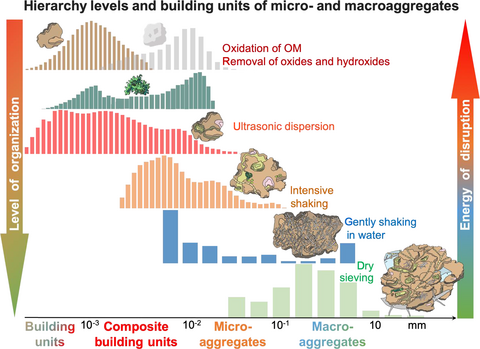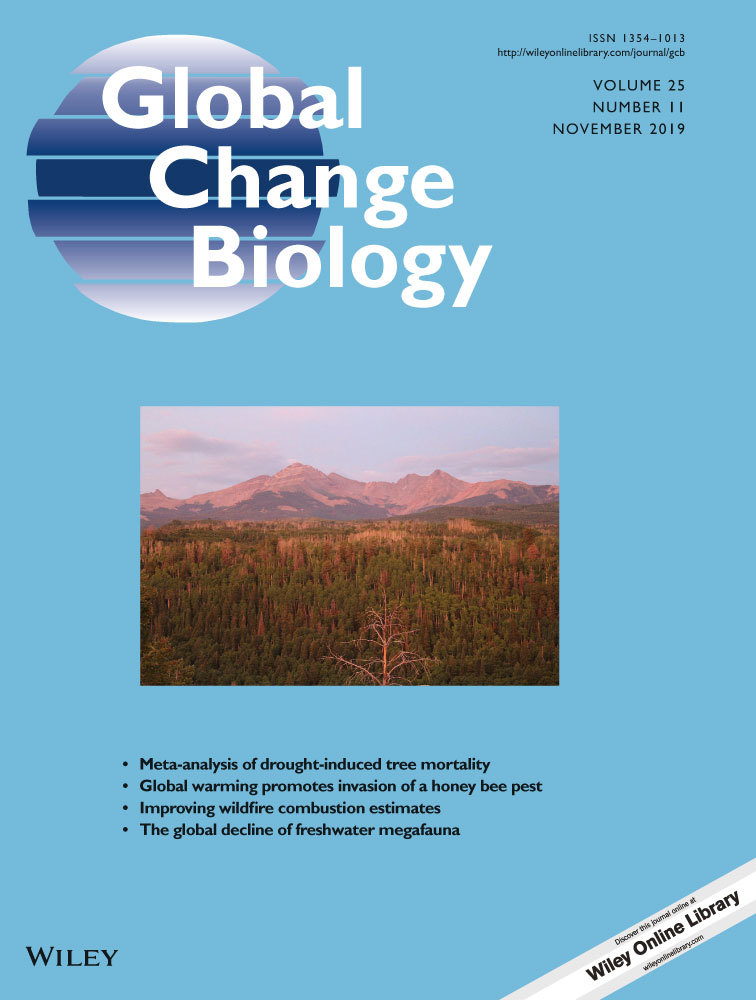Saving the face of soil aggregates
Graphical Abstract
Three recent papers presented contrasting views on the importance of aggregates for C and N turnover, greenhouse gas emissions and other soil functions. These papers raised the old controversial discussion about the components of soil structure: pores and aggregates. After the presentation of the weaknesses of one-sided views on pores (common among modelers of fluxes) or aggregates (common among scientists focused on pedogenesis and soil organic matter), we presented the hierarchical organization of soil structure, and mentioned its five parameter groups: morphometric, geometric, physical, chemical and energetic. Despite pores are arenas for processes, aggregates are the result of these processes and have a much longer “memory” than pores. Aggregates determine element contents and spatial distribution, interactions between solid and liquid phases, heat flows and capacity — and therefore, define many soil functions. Physico-chemical and biological stabilization mechanisms of micro- and macroaggregates allowed to arrange the large soil groups according increasing aggregate stability. Concluding, a dual pore-aggregate perspective is necessary for holistic understanding of soil structure and functions.
Three recent papers: “Aggregates as biogeochemical reactors” (Wang, Brewer, Shugart, Lerdau, & Allison, 2019a), “Soil aggregates as biogeochemical reactors: Not a way forward …” (Kravchenko, Otten, Garnier, Pot, & Baveye, 2019), and “Building bottom-up aggregate based models...” (Wang, Brewer, Shugart, Lerdau, & Allison, 2019b) presented contrasting views on the importance of aggregates for C and N turnover, with a main focus on greenhouse gas (GHG) emissions. Wang et al. (2019a) stated that all biogeochemical reactions are ongoing in aggregates and that, after sophisticated integration of environmental factors into models at the aggregate scale, it is possible to upscale GHG fluxes up to the global level and make predictions under climate change. In contrast, Kravchenko et al. (2019) argued for the absence of aggregates in soils in situ, and demonstrated that the concept of Wang et al. (2019b) is misleading. Whereas we fully support the view (Kravchenko et al., 2019) that the “soil is not a simple sum of its individual components” and agree on the uselessness of process modelling at the aggregate scale for global upscaling, we disagree with the insignificance of aggregates and the absence of their existence. This Letter to the Editor is essential to “save the aggregates”: to show their relevance as a functional and methodological basis for understanding soil structure and processes, but to moderate the opinion of Wang et al. (2019b) about their overbearing role for biogeochemical modelling and upscaling.
Firstly, the analysis of processes at the scale of a few mm (or cm) is useless for the modelling of processes at the soil profile to global scale (as Wang et al., 2019b, suggested as being feasible). This is not only because “soil is not a simple sum of its individual components” (Kravchenko et al., 2019) but also because the processes are scale specific. Accordingly, the processes dominating at the aggregate scale can be entirely irrelevant at the profile, landscape, regional and global levels. Upscaling any process can be principally correct under at least four prerequisites: (a) the process is scale independent: the process outcome increases linearly with the scale; (b) no new processes are relevant at the larger scales (compensating or accelerating the initial process); (c) the process drivers are identical on each scale; and (d) there are no interactions characterizing the next level and making the individual components into a system. None of these prerequisites are fulfilled to upscale aggregate biochemistry and, consequently, any such upscaling is invalid.
The statement that nearly all biochemical processes are generally ongoing in aggregates (Wang et al., 2019b) is incorrect because nearly all processes in soil are ongoing (a) in the liquid phase or (b) on the interfaces between liquid and solid phases (Totsche et al., 2018). Therefore, modelling at the aggregate level is not very convincing even for a mechanistic understanding.
The “Aggregate reactors” concept (Wang et al., 2019b) has no constructive suggestions for studying GHG production. No clear explanation of how “aggregate reactivity” can be estimated as integral characteristics was provided. Moreover, there are many uncertainties and logic errors: (a) To what extent are aggregates “relatively independent micro-habitats” and how does this independence depend on aggregate type (granular, polyedric, prismatic, etc.) or size (micro-, macro-)? (b) The statement “bulk soil properties determine the environment surrounding the reactors …” is not correct because the aggregates are surrounded by pores, other aggregates and non-aggregated mass with specific properties and not by the “bulk soil.” Therefore, the boundary conditions for modelling are not defined. (c) The measurement methodology of GHG emissions of “reactors” is not mentioned—should it be measurements on individual aggregates or in the aggregate fraction, and what are the experimental conditions (temperature, moisture)? (d) No suggestions are presented on how the “aggregate reactors” concept considers several aggregate size levels and their dynamics; what are the differences for macro- and microaggregated soils, how can non-aggregated soil mass be included in models, etc.? (e) Last but not least, there are over 30 various aggregate types according to their form and size, stability and turnover, and consequently their functions. The aggregate types that should be used in models remain unclear because the processes and thus the functions are not only different but may be opposite (e.g. in granular aggregates and prisms).
Soil is not merely a porous medium composed of four phases (solid, liquid, gaseous, living) but also represents a hierarchically organized system (Yudina, Fomin, Kotelnikova, & Milanovskii, 2018). Any soil is characterized by structure, which is one of the main properties distinguishing the soil from parent material. Soil structure is a spatial arrangement of solids and voids across scales (Rabot, Wiesmeier, Schlüter, & Vogel 2018, modified) smaller than the soil horizon, and leading to the formation of more or less dense clusters: the aggregates. Structure is characterized by five parameter groups: morphometric, geometric, physical, chemical and energetic. In contrast to pore space (which is characterized solely by morphometric and geometric properties), the solid phase (aggregates) can be described by all of them.
Aggregation is a soil-specific process leading to the formation of composite structures of increasing orders—from organo-mineral complexes through micro- to macroaggregates (Totsche et al., 2018). We define aggregates as soil-specific entities built from mineral and organic compounds with stronger bonds between building blocks than with neighbouring particles (Yudina et al., 2018, modified). This leads to the aggregate's internal structure—patterns that change from the centre to the edges (Voltalini et al., 2017), often with dense core parts (Gerke & Genuchten, 1993; Figure 1). Aggregates do exist and have a size, form and stability that is typical for individual soils (Figure 2) depending on parent material and texture, climate and vegetation, biological activity and management as well as pedogenesis duration. Stabilization processes and interactions between soil components leading to aggregate formation have been described in detail earlier (Six, Bossuyt, Degryze, & Denef, 2004; Totsche et al., 2018). Nevertheless, no clear mechanistic separation between processes of macro- and microaggregation is available. Therefore, a uniform protocol for aggregate fractionation as called for in Wang et al. (2019b) requires clear definitions of aggregates.
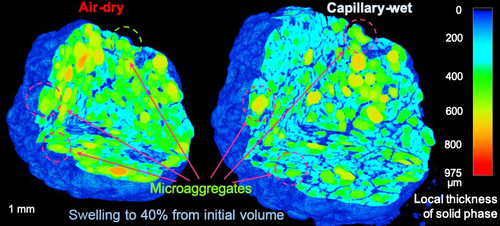
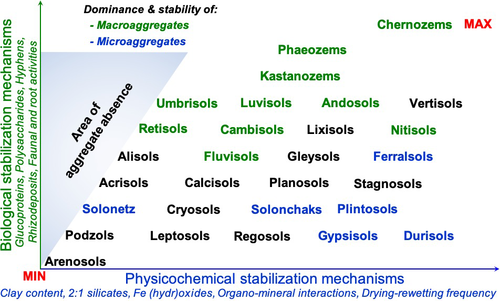
No real aggregates were presented or discussed by Wang et al. (2019b). This makes it impossible and useless to argue about their properties, and any discussion about biochemical functions is groundless. The aggregates of the poorly expressed Luvisol profile chosen for figure 1 in Kravchenko et al. (2019) leave much to be desired. After the loss of clays by lessivation from the AhE horizon (the most important process in Luvisols), the remaining quartz silt is a poor material for aggregation and for organic matter stabilization. This explains the lack of clear aggregate size and forms in figure 1 of Kravchenko et al. (2019). In contrast, many soils build excellent aggregates in Ah (Figure 1) and Bt horizons, for example those with high clay and organic matter content, or those that are subjected to frequent drying–rewetting and freezing–thawing cycles, or characterized by root and fauna activities. We arranged the large soil groups (according to the IUSS Working Group WRB, 2015) based on increasing aggregate stability as related to the physico-chemical and biological stabilization mechanisms corresponding to micro- and macroaggregates (Figure 2). Only virgin Chernozems and Phaeozems (corresponding to Mollisols) have fully macroaggregated mass or structure. Soils such as Ferralsols have only microaggregates; aggregation in sandy soils is very weak or absent. The absence of “anticipated correlations between organic matter content and aggregation” (Kravchenko et al., 2019) is explained because (a) the bulk organic matter content is not the main binding agent for aggregation; and (b) some organic matter fractions, e.g. polysaccharides and glucoproteins, are main binding agents but not the sole agents structuring the soil, and are only a minor fraction of the total organic matter; and (c) most relevant studies were done on agricultural soils, whose structure is strongly destroyed by management and whose organic matter has lost its functions.
“The size of fragments obtained by sieving soils is inversely related to the mechanical stress applied” is argued by Kravchenko et al. (2019) to state the aggregate absence. We agree that it is related, but it is not linearly proportional to the disruption energy, and critical thresholds are common in aggregate size identification (Díaz-Zorita et al., 2002). This confirms the definition that “the bonding forces between building blocks are stronger than with neighboring particles” (Figure 3).
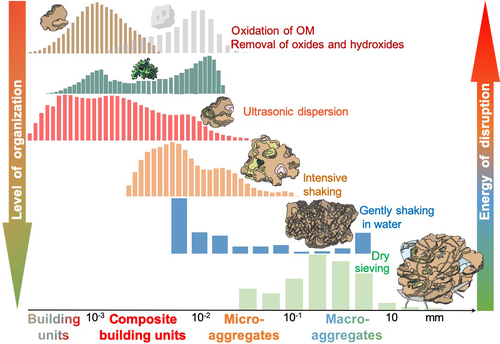
The statement that aggregates are absent in “undisturbed soil because they are not visible in the µCT scans” (Kravchenko et al., 2019) is misleading because: (a) micro computed tomography (µCT) measures the X-ray density of materials, making it mainly useful for detecting pores (having extremely low density) and not the aggregates, because aggregates do not “hang” within pores. This makes aggregates poorly visible in µCT images. (b) Visual expression depends on the µCT data handling. Many filtration, segmentation and calculation methods have been developed to visualize the pores, not the aggregates. Nevertheless, macro- and microaggregates can be well identified in µCT, for example as structures with higher density and specific form, both of which are especially well visible when comparing µCT scan series (Figure 1), reflecting aggregate dynamics depending on moisture. Independent of an aggregate or pore perspective in the soil structure, no single imaging or fractionation method encompasses all necessary properties and relevant soil scales (Karsanina, Gerke, Skvortsova, Ivanov, & Mallants, 2018) and enables a holistic view of soil structure. For that matter, µCT is merely one of the approaches, by far not the panacea.
The major role of aggregates for a broad range of functions (we avoid enumerating the functions of soil aggregates here) cannot be underestimated. Pores are arenas for processes, but aggregates are the result of these processes. The solid phase has a much longer “memory” than pores and it is the result of the processes. This makes aggregates essential for understanding processes in liquid and gaseous phases as well as on their interfaces with solid phases. Pores are more useful for modelling air and water fluxes, but the latter highly depends on solid surface hydrophobicity. Only aggregates (but not pores) and solutions in pores (but not the pores themselves) are used for physical, physico-chemical and biological analyses. That is a prerequisite for understanding and modelling element cycles and soil structure formation. The solid phase has a higher heat conductivity than pores filled with air, making it more useful for modelling heat flows. Consequently, a comprehensive model of soil structure and functions cannot be based solely on the pores, but requires morphometric, geometric, physical, chemical and energetic parameters of the solid phase hierarchical structure—the aggregates.
Summarizing the above, we fully agree with the opinion of Kravchenko et al. (2019) that the suggested concept of aggregates as biogeochemical reactors (Wang et al., 2019b) may be used for correlative modelling at the aggregate level, but this cannot truly lead to understanding of process mechanisms, nor can it enable upscaling to profile, landscape or larger scales. Nevertheless, we disagree with Kravchenko et al. (2019) about the absence of aggregates in soils. As constituents of the soil structure, aggregates define element contents and localization, interactions between solid and liquid phases, heat flows and capacity—and therefore, define many soil functions. It is misleading to disregard the accumulated knowledge about aggregate formation in soils and to assume that the pore perspective is the only way forward in studies of the soil–atmosphere exchange of GHGs and other functions.
ACKNOWLEDGEMENTS
We acknowledge Konstantin Romanenko for the provided µCT images (Figure 1). The paper was funded by RFBR (research project no. 19-29-05260). The contribution of Y.K. was supported by the Russian Science Foundation (project no. 18-14-00362).



